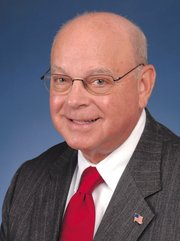LEGAL
Fashion Dispute Resolution Makes Legal Disputes a Win-Win Proposition
It’s a typical story in the apparel industry: A dispute arises between Party A and Party B. Both feel the other side is wrong, one side feels he or she has suffered monetary damages, the other is defensive and outraged at the accusation. They both pick up the phone and call their lawyers, and one lawyer, or sometimes both, files a lawsuit and the litigation process commences. At that point, Party A and Party B should just cut holes in their pockets for what this litigation will cost them, not only in money but in time and heartburn and otherwise productive business relationships.
Benjamin Seigel, a partner at Buchalter Nemer, and Robert Ezra, founding partner of Ezra Brutzkus Gubner LLP, both attorneys with a combined 50-plus years specializing in apparel industry litigation, know the scenario all too well, having often faced each other across the table. “There are fabric disputes and shipping disputes, disputes with chargebacks and factors, people have problems with vendors and trucking companies, everything to do with the apparel business,” Seigel says. And sometimes, Ezra notes, “these cases are based on feeling of being wronged as much as the merits of the dispute.”
Ezra, who also has extensive experience serving on Los Angeles Superior Court Mediation Panels, and Seigel, who serves on the Bankruptcy Court Mediation Panel, believed there had to be a better way. One day, they got to talking. With their intimate knowledge of the fashion and textile industries and their formal training as mediators, why not create a forum that avails the apparel industry of mediation? Fashion Dispute Resolution, or FDR, was born.
Mediation as a way of resolving disputes is a recognized no-brainer in legal circles, considering the skyrocketing costs of litigation in the electronic age due to the requirement of e-discovery. The LA Superior Court used to order mediation in every case, until it ceased to have the money to pay for it, but still strongly recommends it. Federal and bankruptcy courts continue to encourage and often order it. The problem is, Ezra says, “I do not think the apparel community at large is familiar with the process of mediation and its benefits.”
Mediation involves the parties finding common ground, and the will to compromise, to resolve a dispute short of trial or even formal litigation. Trained mediators such as Ezra and Seigel are skilled neutral facilitators who ask the right questions, shine the light on shaky positions, and otherwise guide both sides to a place where both can agree to resolve their dispute, live with the result, shake hands and often continue their business relationship. Because a mediated agreement is the process whereby the parties get to decide the terms of a resolution, the universe of possibilities is only limited by their imaginations. This dynamic differs completely from arbitration, in which arbitrators hear both sides and render a legally binding judgment. “People do not understand that mediation is a consensual arrangement,” Seigel says. “If there is no agreement, there’s no agreement. It’s only binding when it is put into writing and both sides sign it. A mediator does not force a settlement down the throats of the parties.”
The benefits are obvious. FDR mediations can take as little as half a day, Seigel notes, at $6,000 a day for the mediator’s fee, compared with potentially hundreds of thousands of dollars for litigation. When the facts warrant it, a one-half day mediation session with a half-day rate may be appropriate.
Seigel and Ezra boast a nearly 90 percent success rate, and the key to this achievement is the duo’s experience in the industry itself. Ezra has been a principal in several garment-manufacturing companies, and Seigel worked for 13 years in every phase of the industry before becoming a lawyer. This critical background allows them to skillfully weed through the less-than-truthful posturing that can occur in heated disputes. Ezra, for example, knew in one case that a textile manufacturer’s claimed loss of 17 percent to 20 percent of net profits on lost fabric sales could not be true and asked the party to produce its tax return as evidence. When the return showed a 1 percent profit instead, the posturing ceased and an agreement was eventually reached.
“If a mediator knows the industry, he brings credibility to the table,” Ezra says. “They will listen to him or her with more regard, and that credibility often facilitates a successful mediation. I think Ben and I bring that element to mediation—between the two of us, we are often familiar with the litigants. It’s a small world.”
In fact, Ezra and Seigel get many of their cases by referral from fellow apparel industry lawyers. “The best timing for a mediation is as early in the dispute as possible,” Ezra explains, “when they have a good handle on the facts before much money has been spent in discovery.” Their goal, Seigel says, is to get the parties to the mediation table early, before they lawyer-up, “to try to get a resolution before they start spending a lot of money.”
“What we’re trying to do now,” Ezra says, “is to educate the apparel and textile community so that when something comes up, they will know there is an alternative to litigation.
“Because the parties themselves are instrumental in crafting the resolution, everyone walks away in a mediation thinking they’ve done well, or as well as they could,” they go on. “It’s a win-win deal.”
Robert Ezra, Esq., can be reached at (818) 827-9000 or rezra@FDR-Mediation.com Ben Seigel, Esq., can be reached at (213) 891-5006 or bseigel@buchalter.com.























